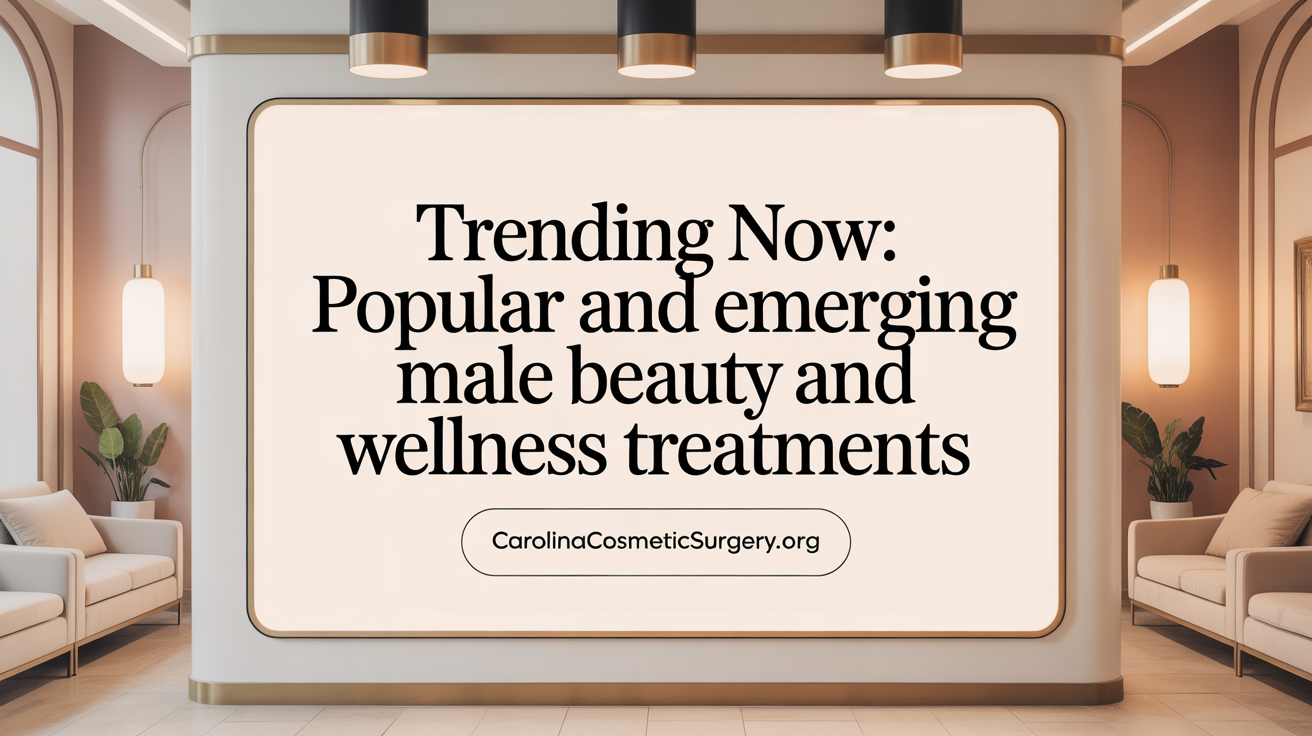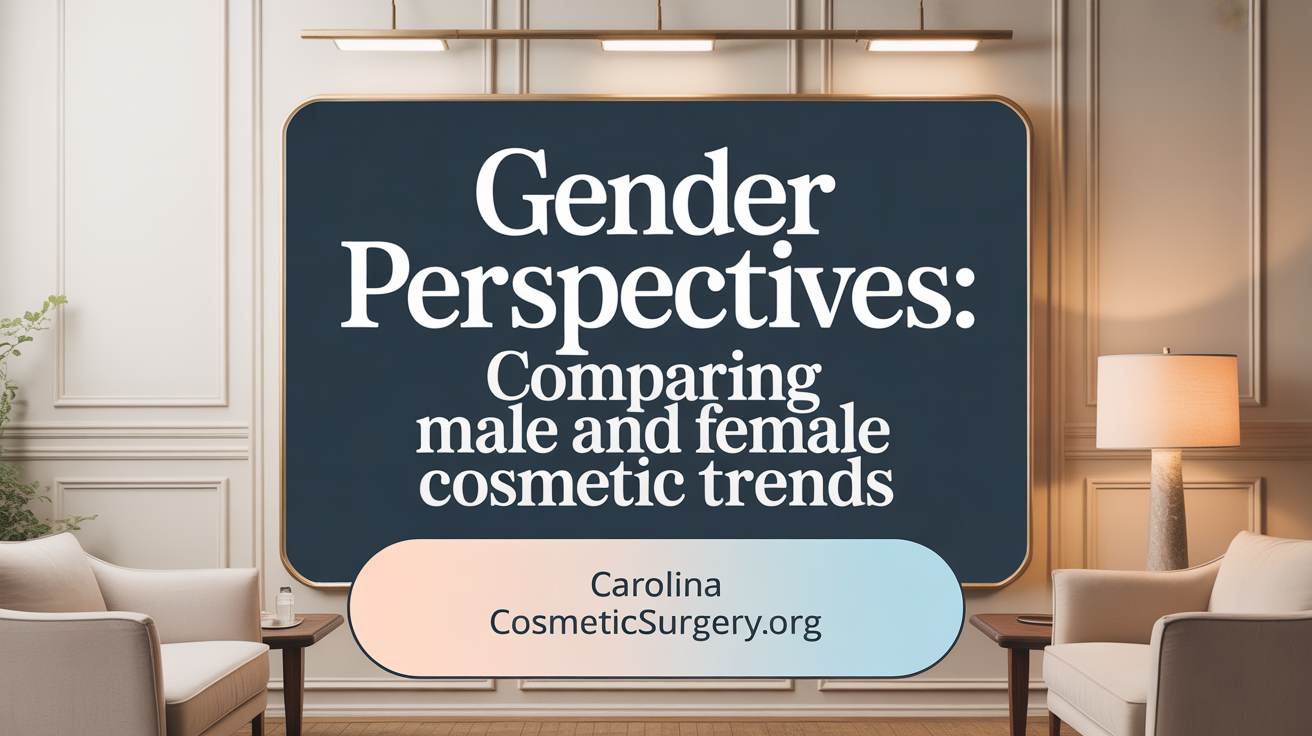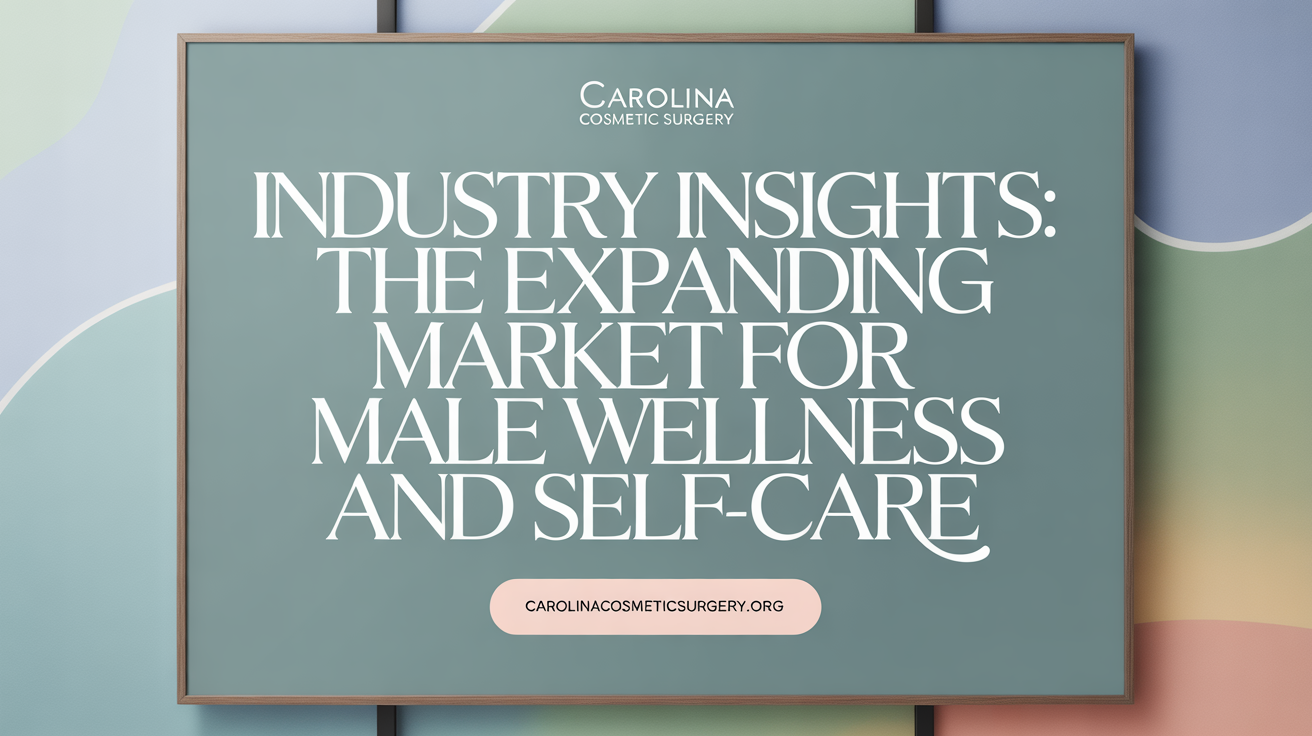The Rising Tide of Male Cosmetic Surgery
Over the past two decades, male cosmetic surgery has witnessed a remarkable transformation from a niche interest to a mainstream trend. Driven by shifting societal attitudes, technological advancements, and heightened media influence, a growing number of men are embracing cosmetic procedures to enhance their appearance, maintain a youthful look, and boost self-confidence. This article explores the statistical growth, popular procedures, motivations, and societal factors fueling the increasing demand for male cosmetic surgery across the globe.
The Statistical Surge: Tracking Growth in Male Cosmetic Procedures

What is the current trend and demand for male cosmetic surgery?
The current landscape reveals a widespread rise in male interest in cosmetic procedures. Driven by shifting societal perspectives, media influences, and a focus on personal grooming, more men are exploring both surgical and non-surgical solutions. Popular treatments include Botox, dermal fillers, liposuction, rhinoplasty, and hair restoration. Non-invasive options like neurotoxins and fillers are favored for their quick results, minimal downtime, and technological advancements that enhance safety and effectiveness.
Over the past decade, this increase reflects changing attitudes towards masculinity and self-care. Men are now more openly seeking aesthetic enhancements to boost confidence and aging gracefully. In 2020, men made up about 13% of cosmetic surgery patients, and this figure continues to grow. The trend indicates a robust and expanding market, with an ongoing shift towards treatments that are subtle, discreet, and suited to men's preferences.
Are men getting more plastic surgery compared to previous years?
Indeed, male participation in cosmetic surgery has significantly increased over recent years. In 2023, the total number of male cosmetic procedures reached approximately 95,634, marking an 8% rise from the previous year. Minimally invasive treatments also grew by about 7%, with over 1.5 million men opting for such procedures in 2022.
Surgical favorites among men include gynecomastia (breast reduction) and facial surgeries like rhinoplasty. Notably, rhinoplasty procedures increased by 13%, demonstrating higher demand for correcting nose shapes that are visible during virtual meetings or in photos. While some procedures like facelifts saw slight declines in 2024, the overall trajectory remains upward, reflecting increasing comfort and societal acceptance of cosmetic enhancements.
What percentage of cosmetic surgery patients are men?
Men currently constitute roughly 13.5% to 13.9% of all cosmetic surgery patients globally. Data from 2022 indicates that male-specific surgeries such as gynecomastia, chin augmentations, and hair transplants are becoming more prevalent. While women continue to comprise the majority—about 92% in the UK—male procedures are increasing more rapidly.
This growth is driven by factors like greater awareness, social media influence, and the normalization of aesthetic treatments among men. Although the overall percentage remains relatively small, the upward trend highlights a societal shift towards embracing male cosmetic procedures. Experts predict this percentage will continue rising as more men seek subtle improvements for personal and professional reasons.
Popular Procedures and Emerging Treatments in Male Cosmetic Surgery

Which cosmetic procedures are most popular and rapidly growing among men?
Male cosmetic surgery has seen remarkable growth over the last decade, driven by social acceptance, media influence, and advancements in techniques. Among the most popular procedures are minimally invasive treatments such as Botox and dermal fillers. Botox, often called 'Brotox,' helps reduce wrinkles and fine lines, providing a refreshed but natural look.
Injectables are favored for their quick results, minimal downtime, and subtle enhancements that appeal to men wanting to maintain a masculine appearance. Dermal fillers are used to restore lost volume, contour the jawline, and smooth out deeper wrinkles.
On the surgical front, procedures like hair transplants, gynecomastia reduction, liposuction, and facelifts are increasingly common. Hair restoration methods address hair loss, a major concern for many men, especially with non-invasive treatments like ultrasound-based therapies gaining popularity.
Facial surgeries such as blepharoplasty (eyelid surgery), rhinoplasty (nose reshaping), and jawline contouring help achieve a more defined, structured look that aligns with the masculinity and youthfulness desired by many male patients.
Body contouring procedures like CoolSculpting and liposuction target stubborn fat, while breast reduction remains significant among men with gynecomastia. Overall, these procedures enhance body aesthetics and combat aging signs, making men look and feel more confident.
Growth of minimally invasive and injectables among men
The trend toward minimally invasive procedures continues to accelerate. Men prefer treatments like Botox, fillers, chemical peels, and laser therapies that offer quick recoveries, often during lunch breaks. These treatments are particularly appealing because they do not disrupt daily routines and maintain natural-looking results.
Injectable neuromodulators and dermal fillers have seen double-digit increases in popularity—growth rates of 65% and 70%, respectively, since 2019. Sclerotherapy for visible veins and skin tightening procedures are also becoming routine, reflecting a broader shift toward preventive and maintenance aesthetic care.
New techniques tailored for male anatomy
Manufacturers and surgeons are developing procedures specifically designed for male anatomy. For example, natural results in jawline contouring and chin augmentation are now prioritized, with techniques customized to emphasize masculine features.
Minimally invasive options like 'Facetite' or non-surgical neck lifts help address sagging skin without traditional surgery, appealing to men who seek subtle, natural improvements.
Trends in facial rejuvenation and body contouring
Facial rejuvenation remains a significant focus, especially as men age but want to maintain a youthful, energetic appearance. Combining procedures like facelift, neck lift, and fat transfer can produce long-lasting, natural results.
Body contouring is also on the rise, with men seeking to improve their physique through liposuction, CoolSculpting, and non-invasive fat reduction devices. These treatments are popular among those who want to refine specific body areas without extensive surgery.
This ongoing evolution in male cosmetic procedures highlights a broader acceptance and a tailored approach for men seeking aesthetic enhancement.
Motivations and Societal Influences Behind Male Cosmetic Surgery Growth
What are the main motivations behind men's interest in cosmetic surgery?
Men's interest in cosmetic procedures has grown substantially over the past decade. Many seek these treatments to boost self-confidence, maintain a youthful appearance, and address age-related concerns like wrinkles, sagging skin, or stubborn fat. The desire for subtle, masculine enhancements—such as a sharper jawline, improved facial contours, or a more defined profile—is common among male patients.
Societal shifts have played a major role in this trend. Increased acceptance of aesthetic treatments, combined with the influence of social media, has made cosmetic procedures more mainstream and less stigmatized. Men now view these options as effective tools for personal satisfaction, career motivation, and social interactions.
Many pursue minimally-invasive treatments like Botox, fillers, and liposuction that offer quick recovery and natural results. These procedures help men feel more confident both in personal and professional settings.
Furthermore, the emphasis on aging gracefully while staying in shape has motivated many men to undergo facial rejuvenation or body contouring. Overall, men are increasingly perceiving cosmetic surgery as a way to enhance their appearance, assert confidence, and succeed in various walks of life.
What societal and technological factors influence the growth of male cosmetic surgery?
Several societal developments have contributed to the rising popularity of male cosmetic procedures. Evolving views on masculinity now include grooming and self-care, breaking traditional stereotypes that once viewed such treatments as unmasculine. This cultural shift encourages men to pursue aesthetic enhancements without stigma.
Media exposure, especially via social platforms like Instagram, TikTok, and YouTube, has heightened awareness of cosmetic options. Men who see influencers or celebrities undergoing aesthetic procedures often feel inspired and motivated to follow suit.
Social media also fosters social comparisons, motivating men to improve their appearance to stay competitive in their personal and professional lives. The 'Zoom effect,' where appearance is scrutinized during virtual meetings, is a contemporary example of how technology influences self-image.
Advances in technology have made treatments safer, more comfortable, and convenient. Procedures such as non-invasive fat reduction, neurotoxin injections, and quick healing options have lowered barriers to access. Men can now undergo effective treatments with minimal downtime, fitting easily into busy schedules.
Workplace culture and societal expectations regarding youthfulness and success further push men toward aesthetic improvements. Overall, a combination of cultural acceptance and technological progress continues to drive the growth of men's cosmetic surgeries.
Comparing Male and Female Cosmetic Surgery Trends: A Gendered Perspective

How do male cosmetic surgery trends compare to female trends?
Male interest in cosmetic procedures has seen a remarkable rise over the past decade. While women still make up about 90% of all cosmetic surgery patients, the number of men seeking these treatments is increasing rapidly. For instance, men now account for approximately 13% of all cosmetic procedures, with a growth of 43% in just the last five years.
Men tend to favor noninvasive options such as Botox, dermal fillers, and CoolSculpting, which allow quick results with minimal downtime. Popular procedures among men include rhinoplasty, liposuction, blepharoplasty, and hair restoration, especially with the influence of social media and virtual meetings highlighting facial features.
In contrast, women still opt for a broader range of surgical interventions like breast augmentation, tummy tucks, and body lifts. The preferences reflect societal expectations and beauty standards, which continue to influence each gender differently.
Proportions of male vs female cosmetic patients
Despite the significant growth in male patients, women remain the dominant demographic in cosmetic surgery, performing about 92% of procedures. However, male procedures are increasing at a much faster rate—over 273% since 1997, and a 43% jump over the last five years.
The American Society for Plastic Surgeons notes a 29% increase in male cosmetic surgeries since 2000. In 2022, over 1.5 million men sought cosmetic procedures, including minimally invasive treatments such as Botox injections and dermal fillers, which saw a 70% increase since 2019.
Social and cultural reasons for gender disparities
Societal norms and cultural perceptions heavily influence the gender gap in cosmetic surgery. Women traditionally face more societal pressure to adhere to beauty standards, leading to higher participation rates.
For men, changing perceptions of masculinity, increased societal acceptance, and the influence of social media are shifting attitudes. Younger men, especially, are more open about seeking aesthetic treatments to boost confidence and competitiveness.
The 'Zoom effect' during the pandemic intensified focus on facial appearance among men, prompting more to consider procedures like rhinoplasty, eyelid surgery, and non-invasive treatments.
Emerging shifts reducing the gender gap
Recent trends indicate a narrowing of the gender disparity, propelled by advancements in techniques that cater specifically to men, making procedures safer and more natural-looking.
The rise of discreet, noninvasive treatments like Botox and fillers allows men to enhance their appearance without significant downtime, fitting into busy lifestyles.
Providers are increasingly adopting personalized care strategies, increasing awareness, and educating men about their options.
Overall, attitudes are evolving, and the societal landscape is becoming more accepting of men pursuing aesthetic enhancements, which continues to close the gap with women's cosmetic surgery participation.
Market Outlook and Industry Insights on Male Cosmetic Surgery

What are the market growth projections and industry insights related to male cosmetic surgery?
The market for male cosmetic surgery is expanding at a steady pace, reflecting increasing interest and acceptance among men. Over the past two decades, the number of male patients opting for plastic procedures has grown by approximately 273%, with a 43% increase recorded in the last five years alone.
Industry forecasts for the global cosmetic surgery market project significant growth, expecting it to jump from around USD 56.94 billion in 2024 to approximately USD 83.34 billion by 2034. This growth corresponds to a compound annual growth rate (CAGR) of about 3.8%. The North American region, especially the United States, remains the dominant market, due to higher disposable incomes, progressive societal attitudes, and better access to advanced procedures.
Several factors are fueling this upward trend. Advancements in surgical and non-surgical technologies make procedures safer, more affordable, and with shorter recovery times. Increasing societal acceptance, partly driven by social media influence and changing perceptions of masculinity, also play vital roles.
Procedures like liposuction, rhinoplasty, hair restoration, Botox, and dermal fillers are particularly popular among men. Many seek subtle enhancements for confidence, aging gracefully, and maintaining a competitive edge in personal and professional spheres.
Major industry players are focusing on innovation, including developing new products and tailoring techniques specifically for male anatomy. Regulatory approvals and marketing strategies aimed at men are expanding, further boosting demand.
Overall, as societal attitudes continue to shift and technological innovations emerge, the male cosmetic surgery market is poised for continued growth, making it an increasingly vital segment within the broader aesthetic industry.
Conclusion: A Lasting Shift Towards Male Aesthetic Enhancement
The surge in male cosmetic surgery reflects broader changes in societal attitudes, technological progress, and evolving ideals of masculinity. With increasing numbers of men opting for both surgical and non-surgical treatments to enhance their appearance, the field is witnessing robust growth supported by favorable market dynamics and an expanding acceptance of male self-care. As innovations continue to refine procedures and reduce downtime, more men are empowered to pursue subtle yet transformative aesthetic enhancements. This ongoing trend underscores not only a shift in beauty standards but also a growing cultural embrace of men’s desires to maintain youthful vigor and confidence in personal and professional spheres.
References
- Changing Aesthetic Surgery Interest in Men: An 18-Year Analysis
- Men and Cosmetic Surgery: The Increasing Trend - NuBody Concepts
- The Surprising Rise of Male Plastic Surgery
- The Growing Trend of Male Cosmetic Procedures | Dr Mayli Davis
- Plastic Surgery Growing in Popularity Among Men - Dr. John A. Kotis
- More Men Looking Younger - Leonard Miller, MD
- Male Plastic Surgery Procedures Are Trending - NewBeauty
- Male Plastic Surgery: The Rise of It
- American Society of Plastic Surgeons Breaks Down 2022 Plastic ...
